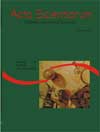<b>The human vice expressed in the Bosch</b> - DOI: 10.4025/actascihumansoc.v31i1.3449
Keywords:
education, Bosch, art and image
Abstract
The objective of this study is to discuss one of most evidenced themes in the works of Hieronymus Bosch (1450-1516), a master of Dutch painting who lived in the late 15th and early 16th centuries: human vice. His accomplishments are known mainly for depicting a conflict between common life and the look for eternal well-being, beyond the representation of the fears, anguish and desires of the late Middle Ages. Our analysis is based on the main idea that image is an educational resource. Thus, we seek, over the course of the study, to mention human vices as guiding sources for social organization. The development takes place through the relation between themes painted by Bosch and medieval thought.Downloads
Download data is not yet available.
Published
2009-06-16
How to Cite
Oliveira, T., & Nunes, M. A. L. (2009). <b>The human vice expressed in the Bosch</b> - DOI: 10.4025/actascihumansoc.v31i1.3449. Acta Scientiarum. Human and Social Sciences, 31(1), 75-83. https://doi.org/10.4025/actascihumansoc.v31i1.3449
Issue
Section
Education History
DECLARATION OF ORIGINALITY AND COPYRIGHTS
I Declare that current article is original and has not been submitted for publication, in part or in whole, to any other national or international journal.
The copyrights belong exclusively to the authors. Published content is licensed under Creative Commons Attribution 4.0 (CC BY 4.0) guidelines, which allows sharing (copy and distribution of the material in any medium or format) and adaptation (remix, transform, and build upon the material) for any purpose, even commercially, under the terms of attribution.
Read this link for further information on how to use CC BY 4.0 properly.























